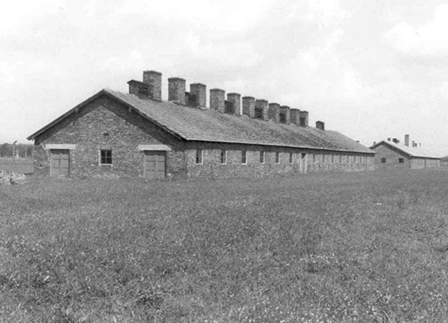- Biography
- Betty Kazin (born Betty Rosenbaum) is the daughter of Ephraim Izaak Levie (Eil) Rosenbaum (b. June 7, 1913 in Rhooden) and Johanna (Jo) Frederika Suzanna Zion (b. Feb, 20, 1914 in Eibergen). Her parents married on August 19, 1940 in Eibergen. Betty was born on August 7, 1941 in Amsterdam at the Portuguese Israelite Hospital (PIZ). She had one brother Izaak Michel Max (b. January 19, 1943). Betty's father worked in the Rembrandt pharmacy located near the Portuguese synagogue in the old Amsterdam ghetto, one block from their house at the corner of Nieuwe Heerengracht and the Amstel River.
Jo had Christian friends who came to Amsterdam and suggested that the Rosenbaum family go into hiding. However, the Judenrat (Jewish Council) demanded Eil to continue working in the pharmacy since many medical professionals had already left. He felt obliged to remain, and told his friends that as long as Jews remained in the ghetto he had to provide them with medication. After the birth of Maxje he sent his wife and children to her family in the east of Holland., The secretary of the Eibergen municipality, Jan Willem Hageman, issued a false identification card for Betty registering her as Elizabeth Cornelia Andriessen (b. August 17, 1941 in Ghent, Belgium). He and his wife Bertha Hageman also agreed to hide Betty in their home. They had two children and belonged to a small religious Protestant Reform Church. Many of its members were active in the underground resistance. They prayed three times a day at home. Betty arrived in their house in 1943 and remained there for the duration of the war and was treated like their own daughter.
Her mother and baby brother were hidden in another village, Neede with the fiancé of her mother's sister Wilhelmina Esther (Mink) Cosman Zion. Unfortunately, they were betrayed by a local Dutch collaborator who received a bounty for their capture. Johanna's brother Julius escaped from this address and later reported this event to the authorities. A non-Jewish friend offered to take the baby, but the constable prevented that saying he arrested three individuals and was obliged to deliver them. Since the Germans could not locate Betty, they sent her mother, brother and aunt's fiance to the punishment barracks in Westerbork. From there they were deported to Sobibor where they were killed on arrival (April 2, 1943). On her way to Sobibor, Johanna managed to send a last letter to Betty. As Betty's father used alcohol to prepare medication, he was rounded up in Amsterdam and deported via Vught and Westerbork to Sobibor where he perished (April 23, 1943). He also mailed a last note. As far as we know, Johanna and Eil did not see each other again.
As an active member of the resistance movement, Mr. Hageman was executed by the Germans on D-Day (6.6.1944) and later was buried at the honorary Overveen cemetery (Bloemendaal). Betty remained with her adoptive mother ("moeder Hageman") even after liberation of Eibergen by the Canadian army. After the war, her aunt, Prof. Dr. Betty Levie, requested to take her to Palestine, but the Zion family wanted her to stay in Eibergen. The Amsterdam Court of Justice determined that Betty should live with the eldest Zion brother, Julius Jaacob Zion. After his wedding to Nora Zion de Jong, she moved into their house in October 1946. She continued to visit her adoptive mother who lived in the same street, renamed J.W. Hagemanstraat, after Mr. Hageman.
Already using three last names, Andriessen-Hageman-Zion, Betty only learned that her real last name was Rosenbaum once she entered first grade. She later joined the Bnei Akiva youth movement and worked at the Israeli Embassy in The Hague. In 1964 she immigrated to Israel, married and is the mother of four children and the grandmother of five grandchildren.
In 2001 Yad Vashem recognized Jan and Bertha Hageman as Righteous Among the nations. In addition to her parents and little brother, Betty's maternal grandmother, Betje Zion Gans, and paternal grandparents Izaak and Bertha Rosenbaum-Levie all perished in Sobibor.



